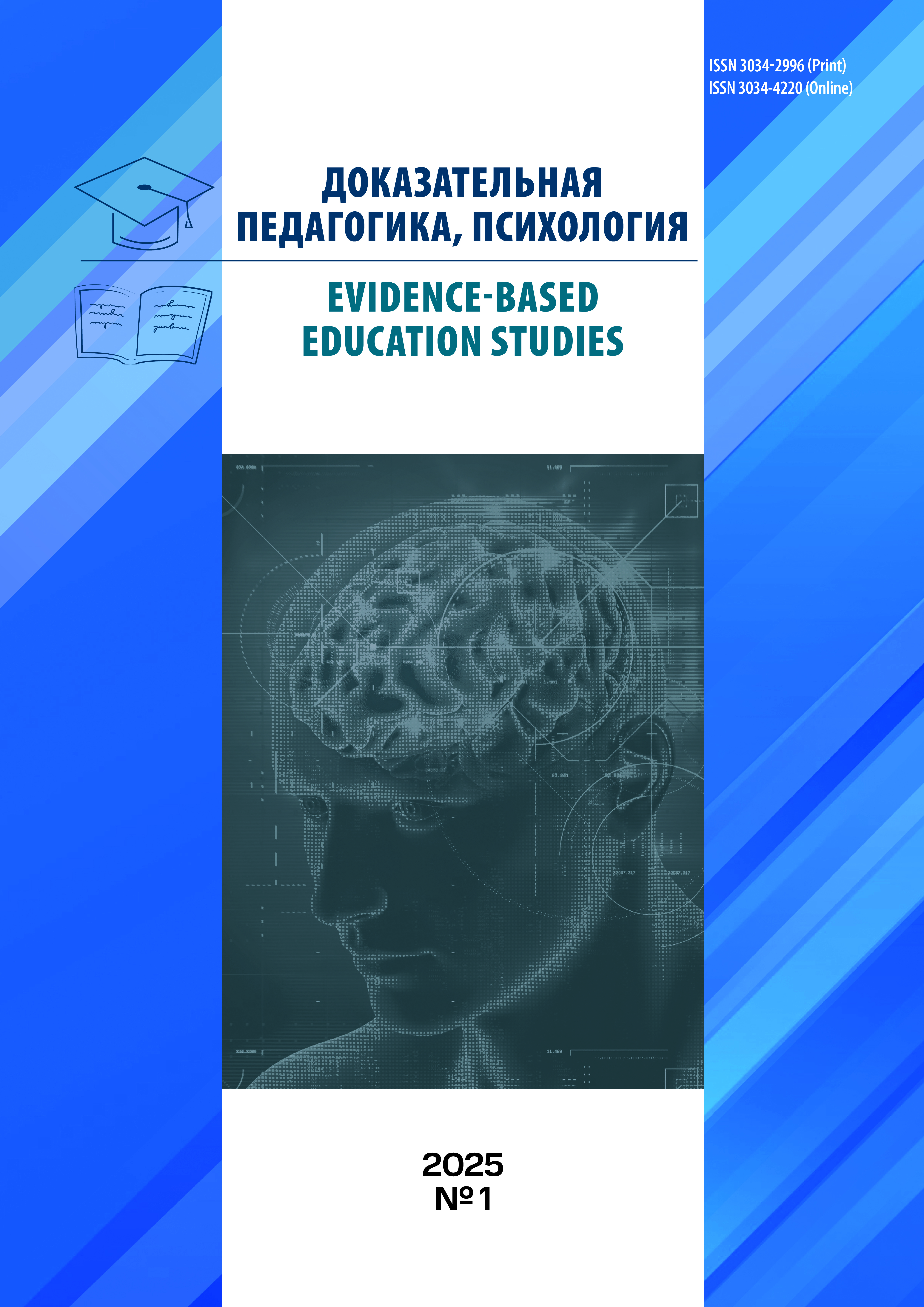Обработка когнитивным бессознательным стимулов со скрытой семантикой
- Авторы: Банщиков А.В.1,2
-
Учреждения:
- Санкт-Петербургский государственный институт психологии и социальной работы
- Санкт-Петербургский государственный университет
- Выпуск: № 1 (2025)
- Страницы: 49-56
- Раздел: Психологические науки
- URL: https://vektornaukipedagogika.ru/jour/article/view/1157
- DOI: https://doi.org/10.18323/3034-2996-2025-1-60-4
- ID: 1157
Цитировать
Аннотация
Дискуссии вокруг возможностей и ограничений когнитивного бессознательного не утихают с момента появления этого термина в научном дискурсе. Особое внимание исследователей уделяется процессу чтения и связанной с ним семантической обработке, так как хрестоматийно считается, что они происходят исключительно сознательно. Когнитивная психология накопила внушительный эмпирический материал, ставящий под сомнение сложившееся положение дел. Исследования в парадигмах artificial grammar learning, word superiority effect, subliminal priming (англ. «искусственное изучение грамматики», «эффект превосходства слов», «подпороговый прайминг») дают достаточно оснований предполагать способность когнитивного бессознательного к обработке семантического материала. В настоящем экспериментальном исследовании уточняются формы проявления когнитивного бессознательного при обработке текстового материала, а именно слов, написанных справа налево (инверсии), и бессмысленных буквенных сочетаний. Испытуемые выполняют мнемическую задачу на узнавание ранее предъявленных стимулов в череде филлеров. Предполагается, что стимулы со скрытой семантической составляющей – инвертированные слова – будут обладать преимуществом в скорости и частоте узнавания, по сравнению с бессмысленными буквенными сочетаниями, а филлеры будут узнаваться медленнее и реже, нежели ранее предъявленные, релевантные стимулы. Искомых эффектов обнаружено не было, однако наблюдается классический для когнитивной психологии результат: верные ответы даются быстрее ошибочных, а верные узнавания инвертированных стимулов происходят быстрее всех, что, пускай и косвенно, свидетельствует о бессознательной семантической обработке. Есть основания полагать, что гипотезы не удалось экспериментально подтвердить ввиду использования оригинальной исследовательской парадигмы. Планируется исследование с использованием классической парадигмы subliminal priming (англ. «подпороговый прайминг») для повторной проверки выдвинутых гипотез.
Ключевые слова
Об авторах
Александр Витальевич Банщиков
Санкт-Петербургский государственный институт психологии и социальной работы; Санкт-Петербургский государственный университет
Автор, ответственный за переписку.
Email: alex.bansh00@gmail.com
ORCID iD: 0000-0003-3719-9693
ассистент кафедры общей и консультативной психологии, ассистент кафедры общей психологии
Россия, 199178, г. Санкт-Петербург, 12-я линия В. О., 13, лит. А; 199034, г. Санкт-Петербург, Университетская наб., 7–9Список литературы
- Пиаже Ж. Аффективное бессознательное и когнитивное бессознательное // Вопросы психологии. 1996. № 6. С. 125–131.
- Rozin P. The evolution of intelligence and access to the cognitive unconscious // Progress in psychobiology and physiological psychology. San Diego: Academic Press, 1976. Vol. 6. P. 245–280.
- Kihlstrom J.F. The Cognitive Unconscious // Science. 1987. Vol. 237. № 4821. P. 1445–1452. doi: 10.1126/science.3629249.
- Klapp S.T., Hinkley L.B. The Negative Compatibility Effect: Unconscious Inhibition Influences Reaction Time and Response Selection // Journal of Experimental Psychology: General. 2002. Vol. 131. № 2. P. 255–269. doi: 10.1037/0096-3445.131.2.255.
- Meyen S., Zerweck I.A., Amado C., von Luxburg U., Franz V.H. Advancing research on unconscious priming: When can scientists claim an indirect task advantage? // Journal of Experimental Psychology: General. 2022. Vol. 151. № 1. P. 65–81. doi: 10.1037/xge0001065.
- Bargh J.A., Ferguson M.J. Beyond Behaviorism: On the Automaticity of Higher Mental Processes // Psychological Bulletin. 2000. Vol. 126. № 6. P. 925–945. doi: 10.1037/0033-2909.126.6.925.
- Bargh J.A., Williams E.L. The Automaticity of Social Life // Current Directions in Psychological Science. 2006. Vol. 15. № 1. P. 1–4. doi: 10.1111/j.0963-7214.2006.00395.x.
- Bargh J.A. The cognitive unconscious in everyday life // The cognitive unconscious: The first half century. Oxford: Oxford University Press, 2022. P. 89–114. doi: 10.1093/oso/9780197501573.003.0005.
- Reber A.S. Implicit learning of artificial grammars // Journal of verbal learning and verbal behavior. 1967. Vol. 6. № 6. P. 855–863. doi: 10.1016/S0022-5371(67)80149-X.
- Reber A.S. Implicit learning: Background, history, theory // The cognitive unconscious: The first half century. Oxford: Oxford University Press, 2022. P. 3–21. doi: 10.1093/oso/9780197501573.003.0001.
- Schiff R., Katan P. Does complexity matter? Meta-analysis of learner performance in artificial grammar tasks // Frontiers in Psychology. 2014. Vol. 5. P. 1–10. doi: 10.3389/fpsyg.2014.01084.
- Cattell J.M. The time it takes to see and name objects // Mind. 1886. Vol. 11. № 41. P. 63–65. doi: 10.1093/mind/os-xi.41.63.
- Деан С. Прямо сейчас ваш мозг совершает подвиг: как человек научился читать и превращать слова на бумаге в миры и смыслы. М.: Бомбора, 2022. 398 с.
- Фаликман М.В. Парадоксы зрительного внимания: эффекты перцептивных задач. М.: Издательский Дом ЯСК: Языки славянской культуры, 2018. 263 с.
- Marcel A.J. Conscious and unconscious perception: an approach to relation between phenomenal experience and perceptual processes // Cognitive Psychology. 1983. Vol. 15. № 2. P. 238–300. doi: 10.1016/0010-0285(83)90010-5.
- Marcel A.J. Conscious and unconscious perception: Experiments on visual masking and word recognition // Cognitive Psychology. 1983. Vol. 15. № 2. P. 197–237. doi: 10.1016/0010-0285(83)90009-9.
- Van den Bussche E., Van den Noortgate W., Reynvoet B. Mechanisms of masked priming: a meta-analysis // Psychological bulletin. 2009. Vol. 135. № 3. P. 452–477. doi: 10.1037/a0015329.
- Janiszewski C., Wyer R.S. Content and process priming: A review // Journal of Consumer Psychology. 2014. Vol. 24. № 1. P. 96–118. doi: 10.1016/j.jcps.2013.05.006.
- Chien Sung-En, Chang Wei-Chen, Chen Yi-Chuan, Huang Shu-Lih, Yeh Su-Ling. The limits of unconscious semantic priming // Current Psychology. 2023. Vol. 42. P. 26824–26835. doi: 10.1007/s12144-022-03590-1.
- Zher-Wen, Rongjun Yu. Unconscious integration: Current evidence for integrative processing under subliminal conditions // British Journal of Psychology. 2023. Vol. 114. № 2. P. 430–456. doi: 10.1111/bjop.12631.
- Hernández-Gutiérrez D., Sorrel M.A., Shanks D.R., Vadillo M.A. The Conscious Side of ‘Subliminal’ Linguistic Priming: A Systematic Review with Meta-Analysis and Reliability Analysis of Visibility Measures // Journal of Cognition. 2025. Vol. 8. № 1. P. 1–20. doi: 10.5334/joc.419.
- Asso D., Wyke M. Experimental study of the effect of letter reversals on reading // British Journal of Psychology. 1967. Vol. 58. № 3-4. P. 413–419. doi: 10.1111/j.2044-8295.1967.tb01098.x.
- Аллахвердов В.М. Опыт теоретической психологии. СПб.: Печатный двор, 1993. 325 с.
- Аллахвердов В.М. Сознание как парадокс. Т. 1. Экспериментальная психологика. СПб.: ДНК, 2000. 528 с. EDN: UDGMKX.
- Schielzeth H., Dingemanse N.J., Nakagawa S., Westneat D.F., Allegue H., Teplitsky C., Reale D., Dochtermann N.A., Garamszegi L.Z., Araya‐Ajoy Y.G. Robustness of linear mixed effects models to violations of distributional assumptions // Methods in ecology and evolution. 2020. Vol. 11. № 9. P. 1141–1152. doi: 10.1111/2041-210X.13434.
Дополнительные файлы







